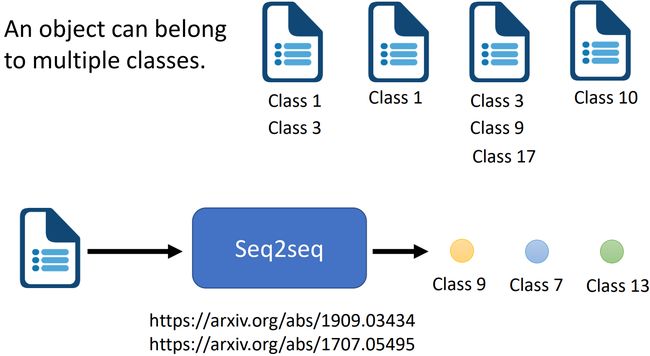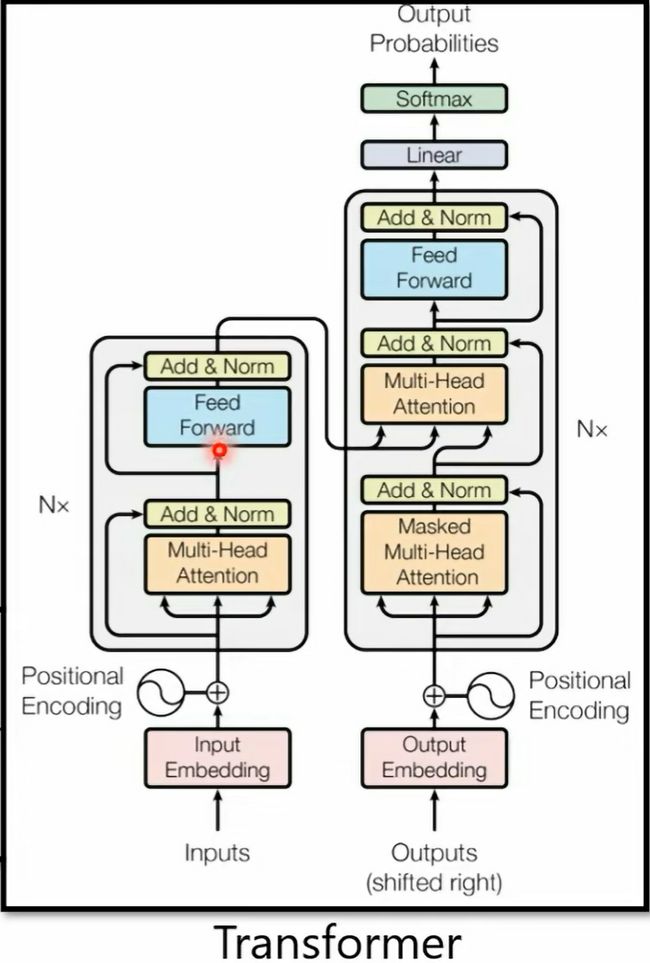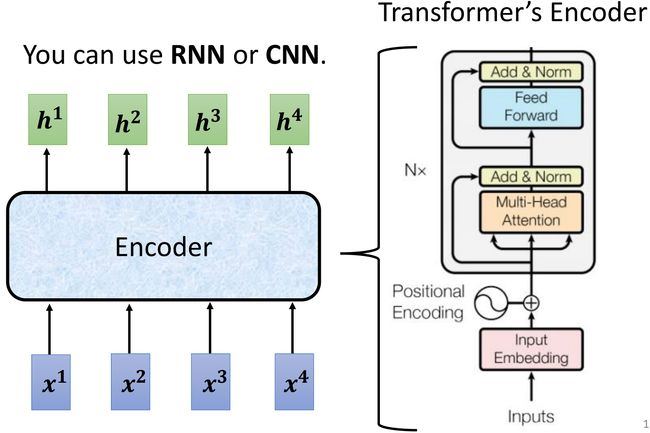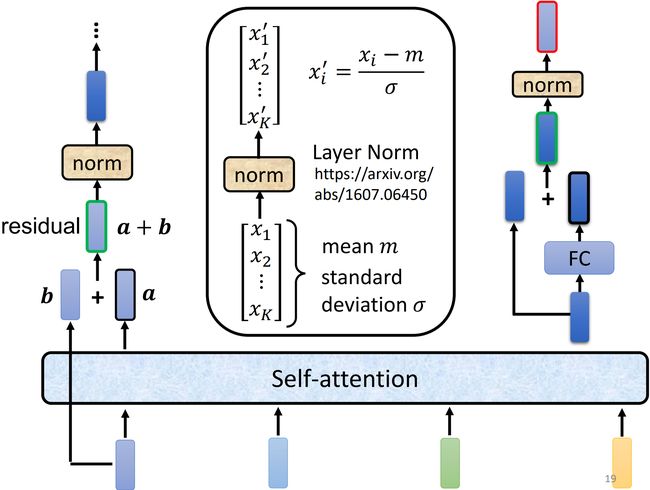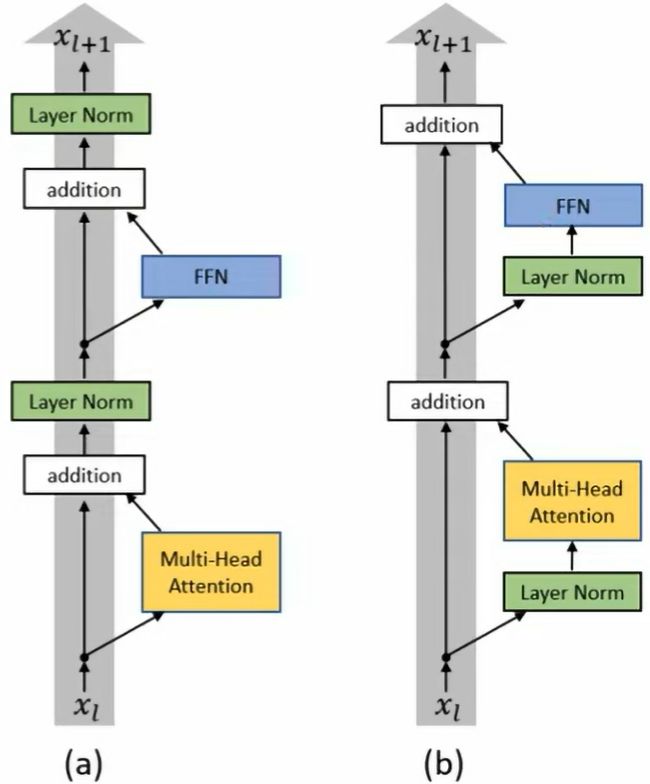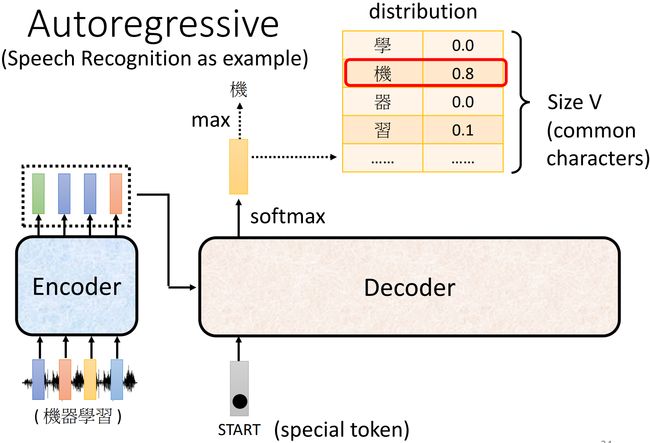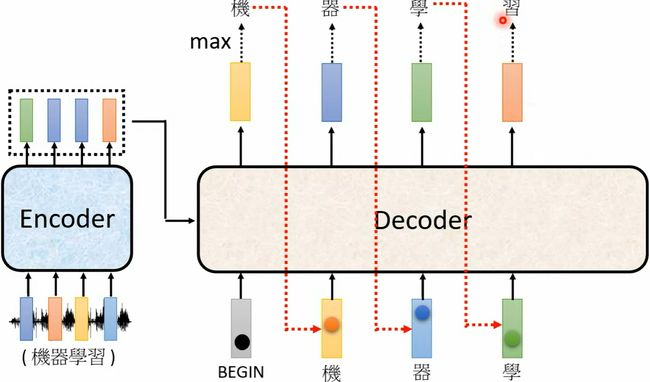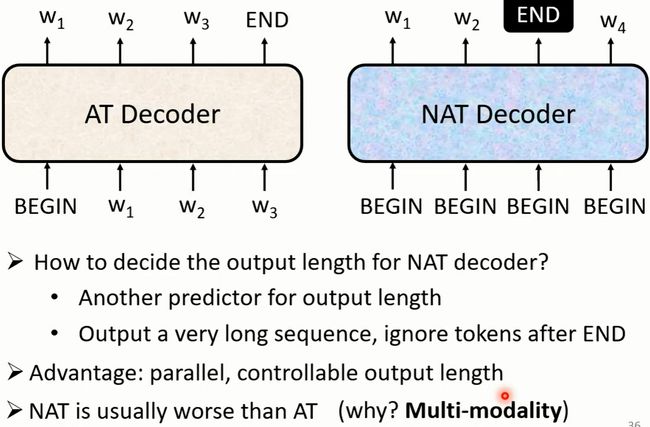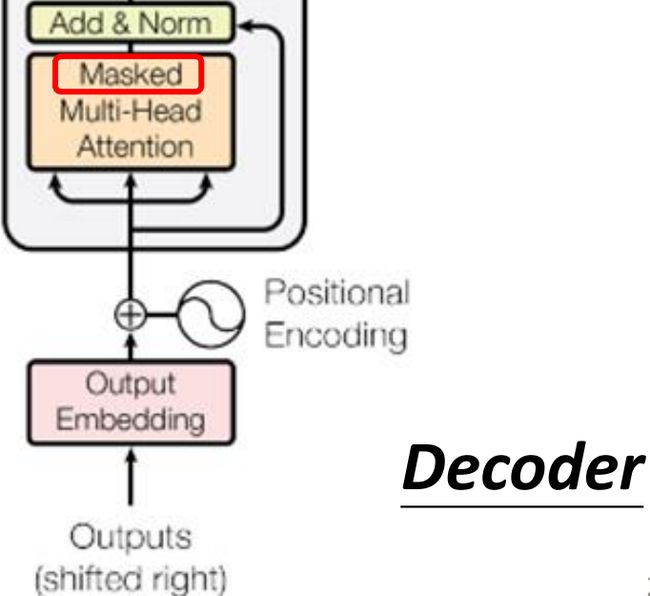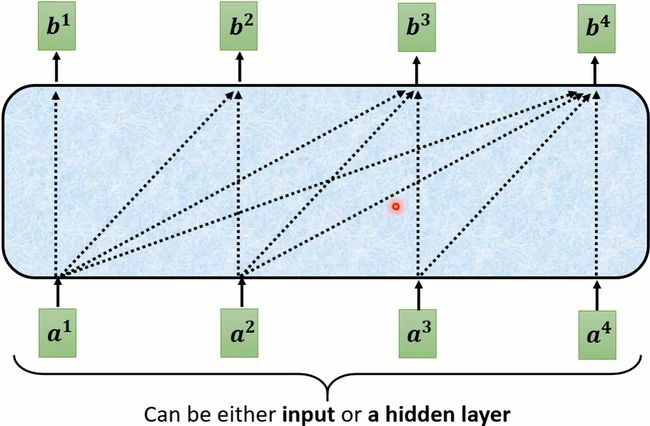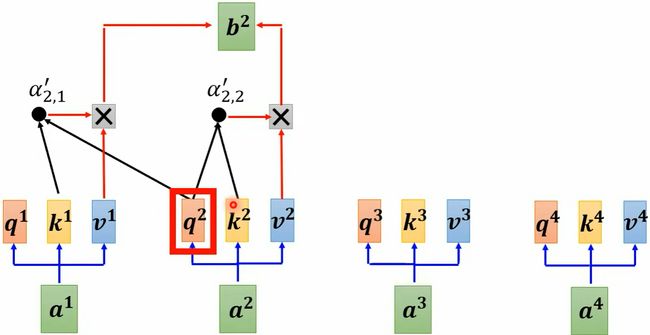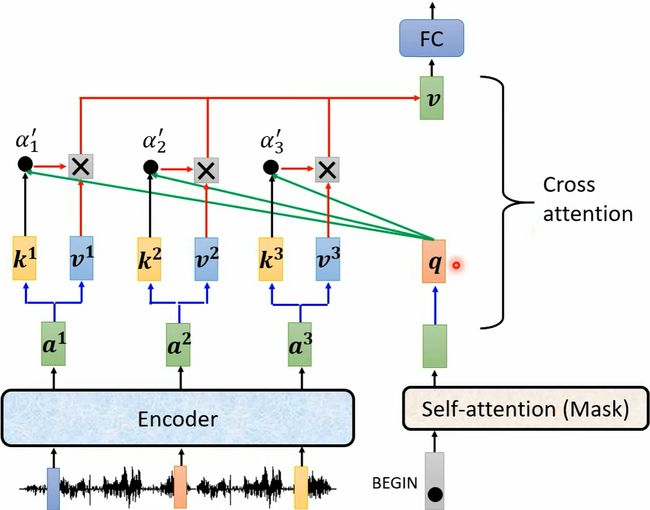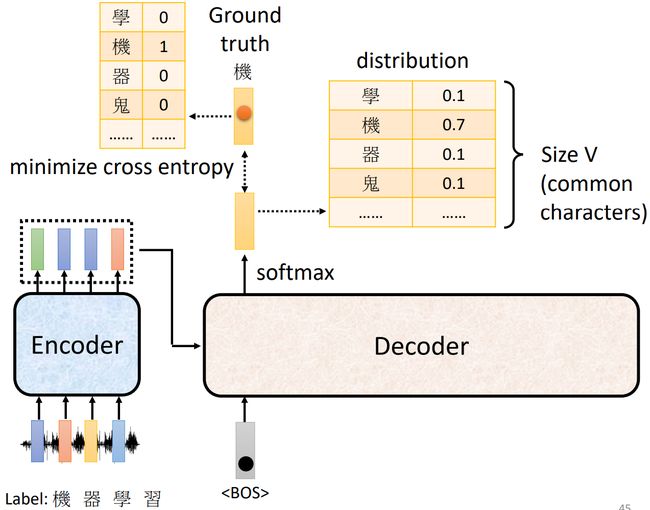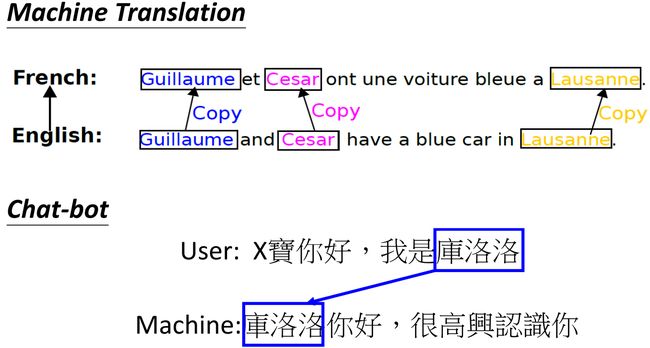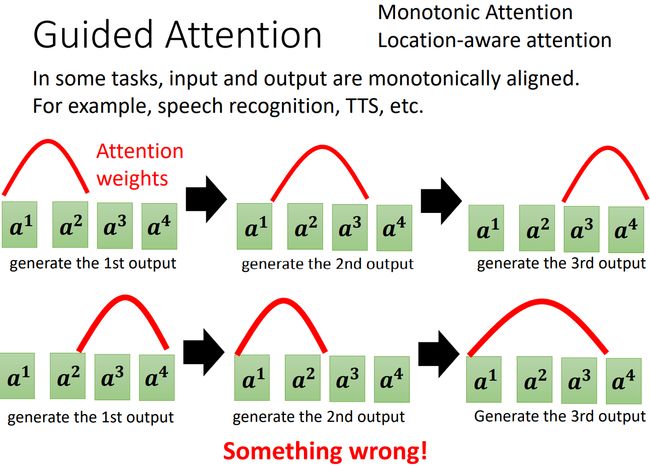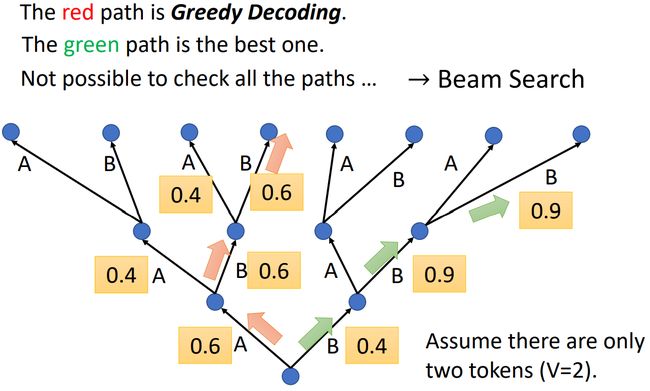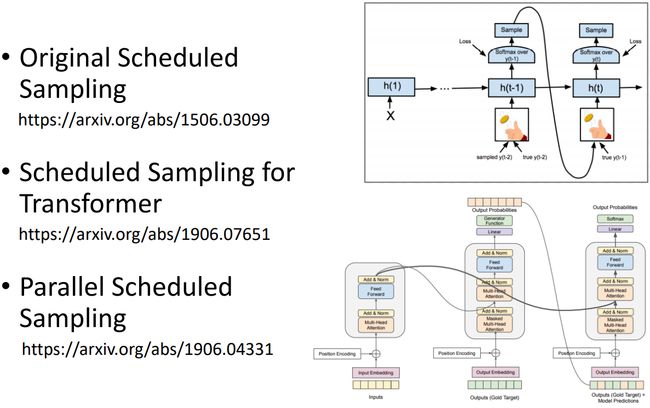- 2022-10-20
体力劳动者
不因感觉稍纵即逝就不加记录。在女儿睡觉后我记下今天的小故事。接手新班级后,今天是第二次收到家长的感谢信(微信)。是我表扬次数最多的两位学生家长致来的感谢,他们明显感受到孩子自信、阳光了不少,写作业由被动变为了主动,家庭氛围也由鸡飞狗跳变成了其乐融融。在被顽皮的学生气得头晕之后,我感到了久违的价值感,责任感甚至使命感,我回复家长这样一句话:我们也需要家长的反馈好让我们的教育工作更有劲头。我也认识到,
- 移动端城市区县二级联动选择功能实现包
good2know
本文还有配套的精品资源,点击获取简介:本项目是一套为移动端设计的jQuery实现方案,用于简化用户在选择城市和区县时的流程。它包括所有必需文件:HTML、JavaScript、CSS及图片资源。通过动态更新下拉菜单选项,实现城市到区县的联动效果,支持数据异步加载。开发者可以轻松集成此功能到移动网站或应用,并可基于需求进行扩展和优化。1.jQuery移动端解决方案概述jQuery技术简介jQuery
- SpringMVC执行流程(原理),通俗易懂
国服冰
SpringMVCspringmvc
SpringMVC执行流程(原理),通俗易懂一、图解SpringMVC流程二、进一步理解Springmvc的执行流程1、导入依赖2、建立展示的视图3、web.xml4、spring配置文件springmvc-servlet5、Controller6、tomcat配置7、访问的url8、视图页面一、图解SpringMVC流程图为SpringMVC的一个较完整的流程图,实线表示SpringMVC框架提
- Spring进阶 - SpringMVC实现原理之DispatcherServlet处理请求的过程
倾听铃的声
后端springjavamvc开发语言分布式
前文我们有了IOC的源码基础以及SpringMVC的基础,我们便可以进一步深入理解SpringMVC主要实现原理,包含DispatcherServlet的初始化过程和DispatcherServlet处理请求的过程的源码解析。本文是第二篇:DispatcherServlet处理请求的过程的源码解析。@pdaiSpring进阶-SpringMVC实现原理之DispatcherServlet处理请求的
- MotionLCM 部署优化 踩坑解决bug
AI算法网奇
aigc与数字人深度学习宝典文生motion
目录依赖项windowstorchok:渲染黑白图问题解决:humanml3d:sentence-t5-large下载数据:报错:Nomodulenamed'sentence_transformers'继续报错:fromtransformers.integrationsimportCodeCarbonCallback解决方法:推理相关转mesh:module‘matplotlib.cm‘hasno
- Flowable 高级扩展:自定义元素与性能优化实战
练习时长两年半的程序员小胡
Flowable流程引擎实战指南流程图flowableBPMN流程引擎java
在前五篇文章中,我们从基础概念、流程设计、API实战、SpringBoot集成,到外部系统协同,逐步构建了Flowable的应用体系。但企业级复杂场景中,原生功能往往难以满足定制化需求——比如需要特殊的审批规则网关、与决策引擎联动实现动态路由,或是在高并发场景下优化流程引擎性能。本文将聚焦Flowable的高级扩展能力,详解如何自定义流程元素、集成规则引擎,并掌握大型系统中的性能调优策略。一、自定
- 2022-04-07
上善若水1979527
昨天苏阿姨来给我送普门品!和她一块来的还有另外一个阿姨!我下去拿时!那阿姨说你不是干房产的小赵!帮我租房的!我说你认识我?对啊!你帮我租的房子!我没印象了!我和保红一块!我说我想起来了阿姨!你这运动服一换!小电车一骑!一下年轻十岁我早记不得了!我只记得一九年五一带看了河滨美航还有德胜的好多套房子!你都不当意!你告诉我你每晚拜观音菩萨说快让小赵普萨帮我找套合适的房子吧!我把本子上记得半年内的德胜房源
- SpringMVC的执行流程
1、什么是MVCMVC是一种设计模式。MVC的原理图如下所示M-Model模型(完成业务逻辑:有javaBean构成,service+dao+entity)V-View视图(做界面的展示jsp,html……)C-Controller控制器(接收请求—>调用模型—>根据结果派发页面2、SpringMVC是什么SpringMVC是一个MVC的开源框架,SpringMVC=Struts2+Spring,
- 2018-09-27 aop相关
蒋超_58dc
1.静态织入,需要使用aspectj专用的compilermaven工程可以采用:https://www.mojohaus.org/aspectj-maven-plugin/2.动态织入,配合spring,创建代理来执行3.
- 包含日志获取webshell
陈望_ning
日志文件关闭:Apache目录下的httpd.conf文件#ErrorLog"logs/error.log"#CustomLog"logs/access.log"common加#号为注释不产生日志文件如果去掉#将会在Apache/logs/目录下产生日志文件linux:access_logerror_logwindows:access.logerror.logaccess_log每一行记录了一次网
- 2022-07-25走着走着 就会发现真相既现实又残酷
我傻我笨但我真
人是环境的产物,如果你不主动引导自己成为自己想成为的那种人,那么你就只能被动地被环境所塑造。做有心人,干困难事,做难事必有所得。先处理情绪,在处理问题。我们要支配习惯,而不是被习惯支配。只要你担心别人怎么看你,他们就能左右你的情绪。担心的越多,在意的越多,情绪就越不稳定,容易被情绪控制。当我们没有那么多的在意,只朝着自己最重要的那个目标去努力,去拼搏的时候,不仅有动力,而且情绪稳定。只有当你不从自
- 与羊有关的诗句
胡天寿01
1.《初春汉中漾舟》(孟浩然)羊公岘山下,神女汉皋曲。雪罢冰复开,春潭千丈绿。轻舟恣来往,探玩无厌足。波影摇妓钗,沙光逐人目。倾杯鱼鸟醉,联句莺花续。良会难再逢,日入须秉烛。2.《边头作》(李端)邠郊泉脉动,落日上城楼。羊马水草足,羌胡帐幕稠。射雕过海岸,传箭怯边州。事归朝将,今年又拜侯。3.《出境游山》(王勃)源水终无路,山阿若有人。羊先动石,走兔欲投巾。4.《按覆后归睦州,赠苗侍御》(刘长卿)
- 为了在未来的人工智能世界中取得成功,学生们必须学习人类写作的优点
睿邸管家
澳大利亚各地的学生在新学年开始使用铅笔、钢笔和键盘学习写字。在工作场所,机器也在学习写作,如此有效,几年之内,它们可能会写得比人类更好。有时它们已经做到了,就像Grammarly这样的应用程序所展示的那样。当然,人类现在的日常写作可能很快就会由具有人工智能(AI)的机器来完成。手机和电子邮件软件常用的预测文本是无数人每天都在使用的一种人工智能写作形式。据AI行业研究机构称,到2022年,人工智能及
- 农场种蔬菜赚钱小游戏有哪些 五大可以赚钱的小游戏APP
氧惠帮朋友一起省
喜欢种菜吗?我特意带来农场种蔬菜赚钱小游戏排行榜2022,线上汇集了超多模拟种菜玩法,玩家可以免费种植赚钱哦!每天都有大量的种植任务,线上完成就能赚钱哦!快来下载吧!1.氧惠APP购物、看电影、点外卖、用氧惠APP!更优惠!氧惠(全网优惠上氧惠)——是与以往完全不同的抖客+淘客app!2023全新模式,我的直推也会放到你下面,送1:1超级补贴(邀请好友自购多少,你就推广得多少,非常厉害),欢迎各位
- Selenium 特殊控件操作与 ActionChains 实践详解
小馋喵知识杂货铺
selenium测试工具
1.下拉框单选操作(a)使用SeleniumSelect类(标准HTML标签)Selenium提供了内置的Select类用于操作标准下拉框,这种方式简单且直观。fromselenium.webdriver.support.uiimportSelect#定位下拉框dropdown=Select(driver.find_element("id","dropdown_id"))#通过以下三种方式选择单个
- 3次创业身价百亿,2年前却被大众判“死刑”,李想如今怎样了?
职心眼儿
他,19岁放弃高考去创业;25岁,成为亿万富豪,被央视评为“80后创业”领军人物;39岁,身价再次暴涨,一夜间闯过200亿大关。他,在3个领域连续创业20年,一家公司市值700亿,一家公司市值2000亿。而他的最高学历,却只有高中。这个人,就是理想汽车的创始人——李想。纵观李想的创业史,可谓是颇为传奇:一个既没背景,又没资金高中毕业生,怎么就让3位互联网巨头(张一鸣、王兴、程维)同时为自己站台?更
- 父母拼尽一切孩子却不领情?一定要学会这一招
四叶草_add9
中原焦点团队李金梅坚持分享第601天2021.5.28中国的父母是世界上最累的父母,从孩子出生,他们就开始了操劳的父母生涯:孩子年幼时,照顾他的吃喝拉撒;孩子上学后,忙完工作回到家还要辅导孩子的功课,辅导不了要报辅导班;孩子长大成人了,父母仍然要操心孩子的工作和婚姻;孩子结婚的房子,父母帮着买;孩子生了孩子,父母帮着带……父母的大半生都把孩子排在自己前面,一切为了孩子,最后却往往落不着好:孩子要么
- 微信公众号回调java_处理微信公众号消息回调
weixin_39607620
微信公众号回调java
1、背景在上一节中,咱们知道如何接入微信公众号,可是以后公众号会与咱们进行交互,那么微信公众号如何通知到咱们本身的服务器呢?咱们知道咱们接入的时候提供的url是GET/mp/entry,那么公众号以后产生的事件将会以POST/mp/entry发送到咱们本身的服务器上。html2、代码实现,此处仍是使用weixin-java-mp这个框架实现一、引入weixin-java-mpcom.github.
- 2022-01-06
嘴角上扬的微微笑
[cp]《琅琊榜》中萧景睿和梅长苏的这段对话,太让人治愈了。他说:“凡是人,总有取舍,你取了你认为重要的东西,舍弃了我,这只是你的选择而已。若是我因为没有被选择,就心生怨恨。那这世间岂不是有太多不可原谅之处。毕竟谁都没有责任,要以我为先,以我为重。无论我如何希望,也不能强求。我之所以这么待你,是因为我愿意。若是以此,换回同样的诚心,固然可喜。可若是没有,我也没有什么好后悔的。”看到这段话真的太感动
- 平凡与伟大--父亲的一生
张翔淋
10.寻找四表哥先生要账还是没有结果,做工程,每到年关都会和农民工一起去要工程款。生活不易。从张家口东站下车的父亲下了车才知道离他四表哥的所在地张北县还有好几十里路,父亲背着随身携带的薄薄的一床被子,在没有路,一人高的杂草淀子里越走越迷路,实在找不着方向了,随身携带的被子也被换了吃的。身无分文,又累又饿的父亲只好去了难民登记处。登记员看见父亲带着的地址要找的人是张北县粮食局的李进替,非常高兴的告诉
- 黛玉葬花是一种什么心情
爱的生命力
图片发自App小区里的花终于开了,带着孩子在小区散步的时候,无意间我注意到了玉兰,第一次我发现原来它是先开花后长叶子的,洁白如玉的花高耸入云,那种洁白,让人敬畏。因为有风,所以带孩子在楼遮挡的草坪上玩,发现紫叶李的花也开了,并且随着风的吹动,落了满地,孩子捡起一朵花,拿到我面前,细声细气的说“花”,我的大脑细胞瞬间激活,为什么不和孩子一起捡花呢!这可是一项好玩的游戏,于是我给孩子拿了一个大的挖土用
- 替身贵妃将我扒光沉塘,暴君杀红了眼陆知白李双儿全本免费小说阅读_最新完本小说替身贵妃将我扒光沉塘,暴君杀红了眼(陆知白李双儿)
多多文馆
《替身贵妃将我扒光沉塘,暴君杀红了眼》主角:陆知白李双儿简介:我是贫门农女,也是暴君爱而不得的白月光。为逼我入宫,他将我满村屠尽!暴君在后宫建了一座水晶殿,将我禁锢其中。他日日宠幸我,直至寻到一个与我七分相似的替身,方才淡了兴致。他将替身封为贵妃,千娇万宠一言可戏诸侯。贵妃恃宠生娇,趁着暴君出宫巡视,带着一群人闯进水晶殿。“本宫马上就要受封为后,今天就来清理后宫!”她在我脸上刻奴字,挑断我的手筋脚
- 盘点长期可做的副业兼职有哪些?分享7个长期可做的靠谱副业兼职!
古楼
副业兼职做什么好呢?适合上班族的6个副业?不少上班族薪资不高,加薪无望,就希望搞副业多挣点钱,不仅能打消下班的空闲时间,还能丰富自己的生活,还能赚点钱补贴家用。那么有什么适合上班族的副业,既不占用上班的时间,又不会消耗太多的精力影响第二天上班。这里我总结了6个适合上班族的副业,提供给大家,希望有所帮助。第一款优惠劵导购平台,零投资,安全可靠高省APP,是2022年推出的平台,0投资,0风险、高省A
- [spring6: Mvc-网关]-源码解析
推荐阅读:[spring6:Mvc-函数式编程]-源码解析GatewayServerMvcAutoConfiguration@AutoConfiguration(after={HttpClientAutoConfiguration.class,RestTemplateAutoConfiguration.class,RestClientAutoConfiguration.class,FilterAu
- 人工智能应用研究快讯 2021-11-30
峰谷皆平
[HTML]ArtificialIntelligenceforSkinCancerDetection:ScopingReviewATakiddin,JSchneider,YYang,AAbd-Alrazaq...JournalofMedicalInternet...,2021ABSTACT:Background:Skincanceristhemostcommoncancertypeaffectin
- 意识决定行动
eggplant
2022年3月24日星期四我们经常说“意识决定行动”。“意识”更完整的表达是“思想意识”,思想意识,“搜狗百科”里解释“是人将大脑存储的知识作用于思考生命存在的各种感受的活动。”比较深奥,简单的说我认为就是对事物的认识程度。“意识决定行动”,对事物认知程度的高低决定个体将以什么样的方式去行动,在意识上觉得事情很重要,就会以相对认真的态度去对待,当意识上觉得这件事情没有很大的价值的时候,就会自然将事
- 张长玲碎嘴惹闲气,郭德旺无心泄天机【三】
南山顽石
玲玲便紧紧靠在他身边不情不愿地继续朝前走,一边走一双手却一边不太安分的在他身上摩挲起来。突然,她的一只手伸进了他的衣袋里,紧接着又出来,却已捏着个东西,口中欢叫起来:“啊!你有这,咋不早说?”瑞年朝她手上一看说:“气球嘛,有啥稀奇?”“你瓜呀!”玲玲笑道,“这是biyuntao,我在我大嫂子屋里见过的,想偷偷拿几个呢,又没好意思。”瑞年停下脚步问道:“啥是biyuntao?”李玲玲看他半日,把脸微
- 【Jupyter】个人开发常见命令
TIM老师
#Pycharm&VSCodepythonJupyter
1.查看python版本importsysprint(sys.version)2.ipynb/py文件转换jupyternbconvert--topythonmy_file.ipynbipynb转换为mdjupyternbconvert--tomdmy_file.ipynbipynb转为htmljupyternbconvert--tohtmlmy_file.ipynbipython转换为pdfju
- AI 生成虚拟宠物:24 小时陪你聊天解闷
大力出奇迹985
人工智能宠物
本文围绕AI生成虚拟宠物展开,介绍这类依托人工智能技术诞生的虚拟伙伴,能实现24小时不间断陪伴聊天,为人们解闷。文中详细阐述其技术基础,包括自然语言处理、机器学习等;分析多样功能,如个性化互动、情绪回应等;探讨在独居人群、压力大者等不同群体中的应用场景,最后总结其为人们生活带来的积极影响及未来发展潜力,展现AI虚拟宠物在陪伴领域的独特价值。一、AI生成虚拟宠物的诞生背景与技术基石在快节奏的现代社会
- 用代码生成艺术字:设计个性化海报的秘密
本文围绕“用代码生成艺术字:设计个性化海报的秘密”展开,先概述代码生成艺术字在海报设计中的独特价值,接着介绍常用的代码工具(如HTML、CSS、JavaScript等),详细阐述从构思到实现的完整流程,包括字体样式设计、动态效果添加等,还分享了提升艺术字质感的技巧及实际案例。最后总结代码生成艺术字的优势,为设计师提供打造个性化海报的实用指南,助力提升海报设计的独特性与吸引力,符合搜索引擎SEO标准
- apache ftpserver-CentOS config
gengzg
apache
<server xmlns="http://mina.apache.org/ftpserver/spring/v1"
xmlns:xsi="http://www.w3.org/2001/XMLSchema-instance"
xsi:schemaLocation="
http://mina.apache.o
- 优化MySQL数据库性能的八种方法
AILIKES
sqlmysql
1、选取最适用的字段属性 MySQL可以很好的支持大数据量的存取,但是一般说来,数据库中的表越小,在它上面执行的查询也就会越快。因此,在创建表的时候,为了获得更好的 性能,我们可以将表中字段的宽度设得尽可能小。例如,在定义邮政编码这个字段时,如果将其设置为CHAR(255),显然给数据库增加了不必要的空间,甚至使用VARCHAR这种类型也是多余的,因为CHAR(6)就可以很
- JeeSite 企业信息化快速开发平台
Kai_Ge
JeeSite
JeeSite 企业信息化快速开发平台
平台简介
JeeSite是基于多个优秀的开源项目,高度整合封装而成的高效,高性能,强安全性的开源Java EE快速开发平台。
JeeSite本身是以Spring Framework为核心容器,Spring MVC为模型视图控制器,MyBatis为数据访问层, Apache Shiro为权限授权层,Ehcahe对常用数据进行缓存,Activit为工作流
- 通过Spring Mail Api发送邮件
120153216
邮件main
原文地址:http://www.open-open.com/lib/view/open1346857871615.html
使用Java Mail API来发送邮件也很容易实现,但是最近公司一个同事封装的邮件API实在让我无法接受,于是便打算改用Spring Mail API来发送邮件,顺便记录下这篇文章。 【Spring Mail API】
Spring Mail API都在org.spri
- Pysvn 程序员使用指南
2002wmj
SVN
源文件:http://ju.outofmemory.cn/entry/35762
这是一篇关于pysvn模块的指南.
完整和详细的API请参考 http://pysvn.tigris.org/docs/pysvn_prog_ref.html.
pysvn是操作Subversion版本控制的Python接口模块. 这个API接口可以管理一个工作副本, 查询档案库, 和同步两个.
该
- 在SQLSERVER中查找被阻塞和正在被阻塞的SQL
357029540
SQL Server
SELECT R.session_id AS BlockedSessionID ,
S.session_id AS BlockingSessionID ,
Q1.text AS Block
- Intent 常用的用法备忘
7454103
.netandroidGoogleBlogF#
Intent
应该算是Android中特有的东西。你可以在Intent中指定程序 要执行的动作(比如:view,edit,dial),以及程序执行到该动作时所需要的资料 。都指定好后,只要调用startActivity(),Android系统 会自动寻找最符合你指定要求的应用 程序,并执行该程序。
下面列出几种Intent 的用法
显示网页:
- Spring定时器时间配置
adminjun
spring时间配置定时器
红圈中的值由6个数字组成,中间用空格分隔。第一个数字表示定时任务执行时间的秒,第二个数字表示分钟,第三个数字表示小时,后面三个数字表示日,月,年,< xmlnamespace prefix ="o" ns ="urn:schemas-microsoft-com:office:office" />
测试的时候,由于是每天定时执行,所以后面三个数
- POJ 2421 Constructing Roads 最小生成树
aijuans
最小生成树
来源:http://poj.org/problem?id=2421
题意:还是给你n个点,然后求最小生成树。特殊之处在于有一些点之间已经连上了边。
思路:对于已经有边的点,特殊标记一下,加边的时候把这些边的权值赋值为0即可。这样就可以既保证这些边一定存在,又保证了所求的结果正确。
代码:
#include <iostream>
#include <cstdio>
- 重构笔记——提取方法(Extract Method)
ayaoxinchao
java重构提炼函数局部变量提取方法
提取方法(Extract Method)是最常用的重构手法之一。当看到一个方法过长或者方法很难让人理解其意图的时候,这时候就可以用提取方法这种重构手法。
下面是我学习这个重构手法的笔记:
提取方法看起来好像仅仅是将被提取方法中的一段代码,放到目标方法中。其实,当方法足够复杂的时候,提取方法也会变得复杂。当然,如果提取方法这种重构手法无法进行时,就可能需要选择其他
- 为UILabel添加点击事件
bewithme
UILabel
默认情况下UILabel是不支持点击事件的,网上查了查居然没有一个是完整的答案,现在我提供一个完整的代码。
UILabel *l = [[UILabel alloc] initWithFrame:CGRectMake(60, 0, listV.frame.size.width - 60, listV.frame.size.height)]
- NoSQL数据库之Redis数据库管理(PHP-REDIS实例)
bijian1013
redis数据库NoSQL
一.redis.php
<?php
//实例化
$redis = new Redis();
//连接服务器
$redis->connect("localhost");
//授权
$redis->auth("lamplijie");
//相关操
- SecureCRT使用备注
bingyingao
secureCRT每页行数
SecureCRT日志和卷屏行数设置
一、使用securecrt时,设置自动日志记录功能。
1、在C:\Program Files\SecureCRT\下新建一个文件夹(也就是你的CRT可执行文件的路径),命名为Logs;
2、点击Options -> Global Options -> Default Session -> Edite Default Sett
- 【Scala九】Scala核心三:泛型
bit1129
scala
泛型类
package spark.examples.scala.generics
class GenericClass[K, V](val k: K, val v: V) {
def print() {
println(k + "," + v)
}
}
object GenericClass {
def main(args: Arr
- 素数与音乐
bookjovi
素数数学haskell
由于一直在看haskell,不可避免的接触到了很多数学知识,其中数论最多,如素数,斐波那契数列等,很多在学生时代无法理解的数学现在似乎也能领悟到那么一点。
闲暇之余,从图书馆找了<<The music of primes>>和<<世界数学通史>>读了几遍。其中素数的音乐这本书与软件界熟知的&l
- Java-Collections Framework学习与总结-IdentityHashMap
BrokenDreams
Collections
这篇总结一下java.util.IdentityHashMap。从类名上可以猜到,这个类本质应该还是一个散列表,只是前面有Identity修饰,是一种特殊的HashMap。
简单的说,IdentityHashMap和HashM
- 读《研磨设计模式》-代码笔记-享元模式-Flyweight
bylijinnan
java设计模式
声明: 本文只为方便我个人查阅和理解,详细的分析以及源代码请移步 原作者的博客http://chjavach.iteye.com/
import java.util.ArrayList;
import java.util.Collection;
import java.util.HashMap;
import java.util.List;
import java
- PS人像润饰&调色教程集锦
cherishLC
PS
1、仿制图章沿轮廓润饰——柔化图像,凸显轮廓
http://www.howzhi.com/course/retouching/
新建一个透明图层,使用仿制图章不断Alt+鼠标左键选点,设置透明度为21%,大小为修饰区域的1/3左右(比如胳膊宽度的1/3),再沿纹理方向(比如胳膊方向)进行修饰。
所有修饰完成后,对该润饰图层添加噪声,噪声大小应该和
- 更新多个字段的UPDATE语句
crabdave
update
更新多个字段的UPDATE语句
update tableA a
set (a.v1, a.v2, a.v3, a.v4) = --使用括号确定更新的字段范围
- hive实例讲解实现in和not in子句
daizj
hivenot inin
本文转自:http://www.cnblogs.com/ggjucheng/archive/2013/01/03/2842855.html
当前hive不支持 in或not in 中包含查询子句的语法,所以只能通过left join实现。
假设有一个登陆表login(当天登陆记录,只有一个uid),和一个用户注册表regusers(当天注册用户,字段只有一个uid),这两个表都包含
- 一道24点的10+种非人类解法(2,3,10,10)
dsjt
算法
这是人类算24点的方法?!!!
事件缘由:今天晚上突然看到一条24点状态,当时惊为天人,这NM叫人啊?以下是那条状态
朱明西 : 24点,算2 3 10 10,我LX炮狗等面对四张牌痛不欲生,结果跑跑同学扫了一眼说,算出来了,2的10次方减10的3次方。。我草这是人类的算24点啊。。
然后么。。。我就在深夜很得瑟的问室友求室友算
刚出完题,文哥的暴走之旅开始了
5秒后
- 关于YII的菜单插件 CMenu和面包末breadcrumbs路径管理插件的一些使用问题
dcj3sjt126com
yiiframework
在使用 YIi的路径管理工具时,发现了一个问题。 <?php
- 对象与关系之间的矛盾:“阻抗失配”效应[转]
come_for_dream
对象
概述
“阻抗失配”这一词组通常用来描述面向对象应用向传统的关系数据库(RDBMS)存放数据时所遇到的数据表述不一致问题。C++程序员已经被这个问题困扰了好多年,而现在的Java程序员和其它面向对象开发人员也对这个问题深感头痛。
“阻抗失配”产生的原因是因为对象模型与关系模型之间缺乏固有的亲合力。“阻抗失配”所带来的问题包括:类的层次关系必须绑定为关系模式(将对象
- 学习编程那点事
gcq511120594
编程互联网
一年前的夏天,我还在纠结要不要改行,要不要去学php?能学到真本事吗?改行能成功吗?太多的问题,我终于不顾一切,下定决心,辞去了工作,来到传说中的帝都。老师给的乘车方式还算有效,很顺利的就到了学校,赶巧了,正好学校搬到了新校区。先安顿了下来,过了个轻松的周末,第一次到帝都,逛逛吧!
接下来的周一,是我噩梦的开始,学习内容对我这个零基础的人来说,除了勉强完成老师布置的作业外,我已经没有时间和精力去
- Reverse Linked List II
hcx2013
list
Reverse a linked list from position m to n. Do it in-place and in one-pass.
For example:Given 1->2->3->4->5->NULL, m = 2 and n = 4,
return
- Spring4.1新特性——页面自动化测试框架Spring MVC Test HtmlUnit简介
jinnianshilongnian
spring 4.1
目录
Spring4.1新特性——综述
Spring4.1新特性——Spring核心部分及其他
Spring4.1新特性——Spring缓存框架增强
Spring4.1新特性——异步调用和事件机制的异常处理
Spring4.1新特性——数据库集成测试脚本初始化
Spring4.1新特性——Spring MVC增强
Spring4.1新特性——页面自动化测试框架Spring MVC T
- Hadoop集群工具distcp
liyonghui160com
1. 环境描述
两个集群:rock 和 stone
rock无kerberos权限认证,stone有要求认证。
1. 从rock复制到stone,采用hdfs
Hadoop distcp -i hdfs://rock-nn:8020/user/cxz/input hdfs://stone-nn:8020/user/cxz/运行在rock端,即源端问题:报版本
- 一个备份MySQL数据库的简单Shell脚本
pda158
mysql脚本
主脚本(用于备份mysql数据库): 该Shell脚本可以自动备份
数据库。只要复制粘贴本脚本到文本编辑器中,输入数据库用户名、密码以及数据库名即可。我备份数据库使用的是mysqlump 命令。后面会对每行脚本命令进行说明。
1. 分别建立目录“backup”和“oldbackup” #mkdir /backup #mkdir /oldbackup
- 300个涵盖IT各方面的免费资源(中)——设计与编码篇
shoothao
IT资源图标库图片库色彩板字体
A. 免费的设计资源
Freebbble:来自于Dribbble的免费的高质量作品。
Dribbble:Dribbble上“免费”的搜索结果——这是巨大的宝藏。
Graphic Burger:每个像素点都做得很细的绝佳的设计资源。
Pixel Buddha:免费和优质资源的专业社区。
Premium Pixels:为那些有创意的人提供免费的素材。
- thrift总结 - 跨语言服务开发
uule
thrift
官网
官网JAVA例子
thrift入门介绍
IBM-Apache Thrift - 可伸缩的跨语言服务开发框架
Thrift入门及Java实例演示
thrift的使用介绍
RPC
POM:
<dependency>
<groupId>org.apache.thrift</groupId>



